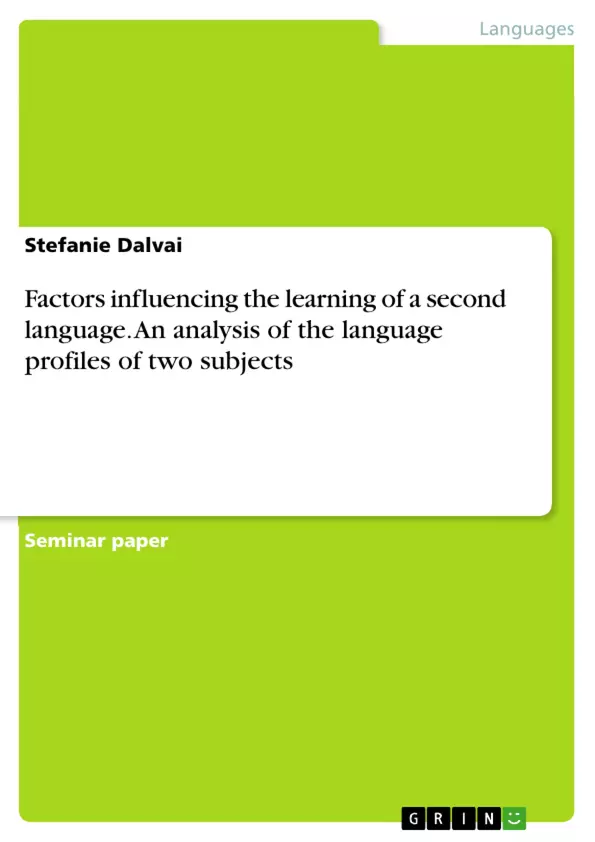Although the study of Second Language Acquisition (SLA) started already in the late 1960s, there is still a lot of incongruency on the subject. Each person seems to differ in his/her respective SLA process, which makes it hard or even impossible to come to an overall truth about how SLA works. Although studies conducted in the last decades might not have led to any overall conclusion, they have verified and falsified different theories, showing that they do not hold true in every case.
From the myriad of different theories and resulting studies, a few will be discussed in connection to the SLA processes of two subjects, which are presented in this case study. In the first part of the paper, the language profiles of each of the two subjects will be analyzed, taking various theories into account and trying to come to an understanding of what have been the causes and effects of their respective language profiles. In the second part, both profiles will be compared. In the conclusion, the most important assumptions will be revised, and a final statement will be drawn.
Table of Contents
- Introduction.
- Julia's case.
- Carlo's case
- Comparison of both cases....
- L1-related differences
- Universal Grammar.
- Universal influences.
- Age
- Context and motivation
- Conclusion....………….
Objectives and Key Themes
This case study examines the factors influencing Second Language Acquisition (SLA) by analyzing the language profiles of two individuals, Julia and Carlo. The study aims to identify and analyze the influences of various theories on their individual SLA processes, ultimately contributing to the understanding of SLA in diverse contexts.
- The influence of L1 (native language) on L2 acquisition.
- The role of Universal Grammar in second language learning.
- The impact of age and context on SLA.
- The distinction between acquisition and learning in SLA.
- The importance of motivation and exposure in SLA.
Chapter Summaries
- Introduction: This chapter provides an overview of the field of SLA and highlights the challenges of reaching definitive conclusions about the process. It introduces the two case studies, Julia and Carlo, and outlines the structure of the paper.
- Julia's case: This chapter analyzes Julia's language profile, considering her multilingual background and early exposure to English. It explores the distinction between acquisition and learning and the potential advantages of early multilingualism.
- Carlo's case: This chapter examines Carlo's language profile, focusing on his limited exposure to English and lack of motivation. It discusses the role of stimulus and input in SLA, as well as the impact of extrinsic motivation on learning.
Keywords
This case study delves into the complexities of Second Language Acquisition (SLA), exploring key themes like L1 influence, Universal Grammar, age-related factors, acquisition vs. learning, motivation, and exposure. The analysis focuses on individual language profiles, drawing from theoretical frameworks to shed light on the diverse factors affecting SLA.
- Arbeit zitieren
- Stefanie Dalvai (Autor:in), 2018, Factors influencing the learning of a second language. An analysis of the language profiles of two subjects, München, GRIN Verlag, https://www.grin.com/document/456409



